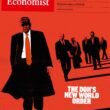Two things are now becoming clear for the events companies which – until Covid-19 – had dominated B2B media M&A across the world.
First, the interruption to so much ‘normal business’ (especially for international events) will be much longer than was believed even a few weeks ago. Quite apart from the extensive constraints on travel and hospitality, many trade show organisers are now weighing the risk of spoiling an exhibition franchise by staging an under-supported event. So, the idea of rushing to get those 2020 shows into the last quarter of the year, rather than missing out altogether, is losing its appeal – for organisers, exhibitors and visitors. We should, therefore, expect a fresh wave of 2020 cancellations.
The second reason not to rush back and try, prematurely, to re-create an established trade show (however profitable) is the realisation that – even now – virtual events may be changing the industry and the expectations of its customers. There is more to do now than just wait for a ‘return’. And, once a live event can resume, it may need to accomodate the ‘new’ digital experiences of customers.
Almost everything that people say about Zoom et al can be true. Video sessions may never replace face-to-face business meetings or events. Sometimes, the medium just doesn’t work well. But it is becoming increasingly clear that plenty of events that can be (at least partly) ‘virtual’ and experiences can be hugely enhanced by digital media. We might assume that increasing numbers of events will become live-digital hybrids, the best of both worlds.
Apart from all else, Zoom et al can help exhibitions companies to develop the business information services which many have seen as the logical, 24/7 ‘deepening’ of their business relationships in any given market. But the development of hybrid events may especially favour companies which are already diversified.
Take Terrapinn, the events business founded by Tony Steel more than 30 years ago in Sydney, Australia, and once operated as a subsidiary of Euromoney. The A$100 million-revenue company, now based in London, operates 80 events each year, attended by some 155,000 people worldwide. Its events are principally in life sciences, transportation, health, and technology. But its ancestry in B2B magazine publishing is, perhaps, revealed by the way that the company derives 42% of its revenue from sponsorship, 36% from exhibitors, and 22% from delegates.
Terrapinn’s leading events are: Seamless payment systems Middle East (Dubai); Edutech Australia (Sydney); World Aviation Festival (London); World Vaccine Congress (Washington); and Home Delivery World USA (Philadelphia). These five events might account for some 25% of the revenue but, geographically, Terrapinn is neatly spread across Europe, Asia and the Americas. Some shows (like the geo-cloned Seamless) have been operating for more than 20 years.
Last year, Terrapinn made EBITDA of some A$10m from, its A$100m revenue. 2020 would have been a year of more rapid growth and higher margins. But then Covid struck.
Well, the surprise is that Tony Steel (who owns 50% of the company) expects to operate almost as many events this year as in 2019. But most will be virtual. The company has been road-testing virtual events including a disease management conference in the US which attracted 2,000 delegates at just four weeks’ notice. A Phillipines edutech event had planned for a few thousand delegates, but the systems failed when 45,000 tried to log-on simultaneously.
The company is now pressing ahead with a whole raft of virtual events for the rest of 2020. It now expects to achieve a small profit this year from revenue of A$60 million (40% down).
Given that Terrapinn’s fixed costs are some 35-40% of the total (it employs 270 people in six locations), Steel is confident that his digital events – once the model is perfected – will be at least as profitable as the live ones. The only question might be whether the company (which has arranged £19 million of debt in order to fund acquisitions) will now be snapped up by one of the larger exhibitions companies which may become increasingly keen to make the transition to content-rich virtual events in “new” or existing markets. Will Terrapinn be the diner or the dinner?
Meanwhile, on May 12-14 this year, the UK-based Financial Times attracted 52,000 non-paying delegates from 165 countries to its Global Boardroom – launched – at just four weeks’ notice. The event, which focused on the impact of Covid on policy, business and finance, is believed to have had multi-company sponsorship revenue of more than £600k.
The surveys show that visitors loved the event and most spent plenty of time switching between presentations on all three days. As a result, the FT (which is operating a total of 100 virtual events in 2020) is planning to repeat the Global Boardroom in November, the week after the US Presidential election. It will maximise sponsorship revenue and global attendance by operating a freemium model. All visitors can register for free access to to all talks, but only paying delegates will have access to reports, data, special sessions and 1-1 networking. Before then, the company is also operating its highly-profitable FT Weekend Festival as a virtual event.
Given the relatively low-cost of the technology, the emerging hybrid models may, ultimately, prove to be more profitable for organisers than some exhibitions especially if large global audiences attract ‘new’ sponsorship revenues.
Digital events will account for an increasing share of the B2B market, especially during the next two years or so. How that affects pre-existing events brands and/or creates new competitors might depend on market circumstances. But the impact may also depend on the skills and resources applied to creating high-value digital experiences for global audiences – beyond those people who might once have readily flown to an event.
It’s no time for event organisers to await a return to ‘normal’.




